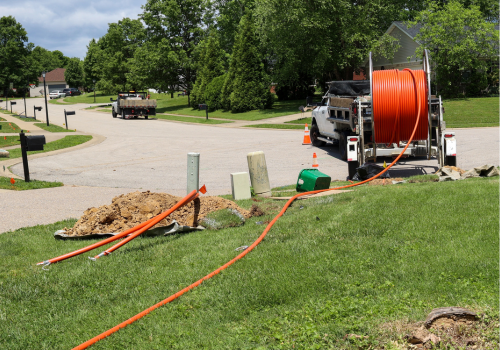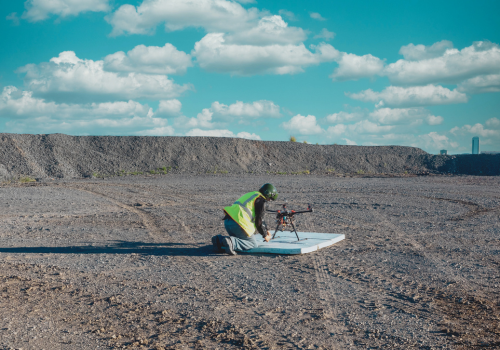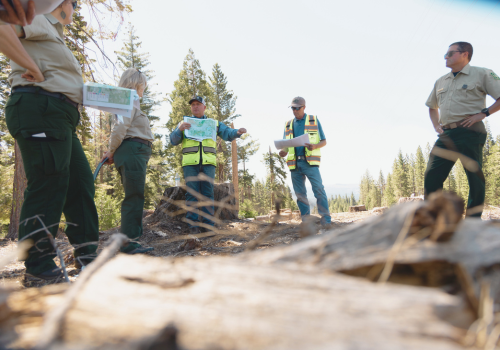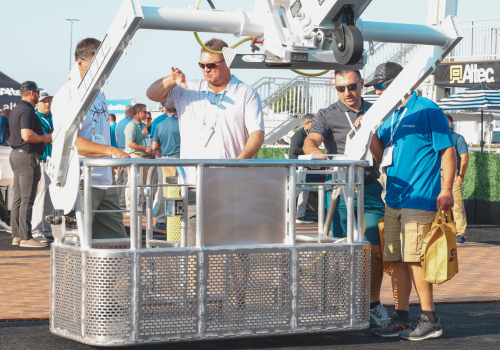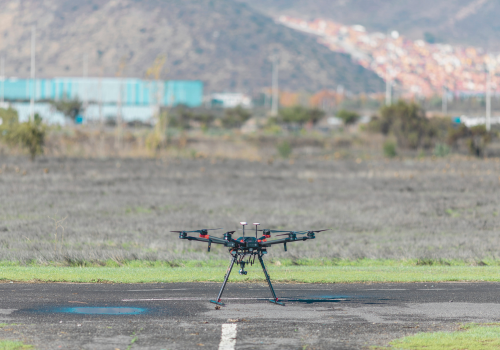Working in utilities poses numerous risks. Electric shock, working with toxic substances, falling from a height, trench collapse, and confined spaces are some of the regular dangers utility workers face.
Companies must proactively approach safety, regularly train staff on safety hazards and procedures, and equip them with adequate safety equipment.
There are a lot of remote workers in the utilities sector, which increases risk. Ensuring personnel safety is therefore more challenging, points out Monica Rakoczy, Owner of EnterTRAINING Solutions. The company provides OSHA safety training and compliance assistance for the utility, construction, and industrial industries. It focuses on presenting safety in a fun and engaging manner that leads to lasting impressions.
Rakoczy spoke at a sold-out Safety Tech Trek education session at The Utility Expo 2023. She discussed safety innovations that are game changers in managing safe and productive worksites. Below are some wearables and other tools she believes are safety game changers.
The latest safety technologies
“One of my favorite tools for monitoring remote workers and empowering workers to make their job situations safer is the SmartQ Z-watch,” says Rakoczy. The Android-based SmartQ Z-Watch is IP-X7 water resistant and offers hands-free access to data on a 240-by-240 pixel, 1.54-inch touch-screen display. “On it, you can download safety apps and communication tools. It serves as a buddy check, and with it, a first responder can identify the location of an injured and unresponsive worker.”
Smartwatch apps provide features such as one-touch message sending, location-based check-ins, alerts, instructions, and set hazard timers.
Rakoczy also points out that gas-detection monitors have come a long way. “They’re now stronger, more durable, and come with more bells and whistles, such as GPS and alerts,” she says.
Rakoczy identifies two apps she believes are helpful. The first one—Alert Meter—monitors the person behind the tool or the equipment, “It looks at the human element, which can be hard to measure. This device develops a baseline for the typical cognitive functioning of an employee. It can then alert that person and their management when it notices an irregularity. Lack of sleep, stress, home life, etc. can all affect a worker's daily responses. Alert Meter allows an unbiased assistance to know when workers are at their best.”
The second app is from a company out of Australia—Alert Safety. “When you work in an industry with moving targets, such as the oil and gas industry, how can you communicate to remote staff during an emergency? Who’s going to respond? This app is useful and clever and provides better communication. You want everything to go right, but being underprepared is worse,” says Rakoczy.
Clothing is your first line of defense
Safety innovations aren’t always digital or shiny. Sometimes, they’re as mundane as the clothes we wear.
The latest MCR Safety wear is triple-vented and flame-and-arc-resistant clothing, which protects the wearer from flash and burn protection, yet it’s composed of light, breathable fabric to help prevent employees from overheating.
Also, OSHA announced in late 2023 that it’s transitioning from traditional hard hats to advanced safety helmets during inspections. The chin straps prevent a hard hat from falling when a worker tilts their head.
“I know of someone who fell six feet off a ladder and hit his head,” says Rakoczy. “Fortunately, he was wearing a hard hat and had the chin strap fastened. If he was wearing a traditional hard hat, it would have fallen off and not protected his head when it made an impact, most likely resulting in much worse injuries.”
Creating a safe working environment
There are several steps employers can take to reduce environmental risks. These efforts make site conditions safer for workers, and possibly for non-workers as well.
A lot of utility work involves working on or near roads. Drivers of passenger vehicles cause far too many worker injuries and deaths.
There have been innovations in traffic safety that are adjusting to the drastic increase in pedestrian fatalities over the last decade. “A new and easy-to-use pi-lit system guides people around work areas taking place on roads or highways,” says Rakoczy. “They communicate to drivers with lighted systems that are crucial for making these site conditions safer for our workers and emergency responders.”
Also, utility companies sometimes must consider the environmental safety aspect. Workers sometimes must deal with toxic material. How do companies protect not just the worker, but the environment from these materials?
“I was really impressed by the Andax Spill Kit I saw at The Utility Expo 2023,” says Rakoczy. “It’s basically the equivalent of the old a 55-gallon drum kit, except vacuum packed into the size of a duffle bag and includes a self-inflating secondary containment system. This is an ideal solution when you’re out in the middle of nowhere and need to contain an environmental hazard. This emergency kit takes up little space, but it can hold a lot.”
While the safety of employees is always the main priority, safety in general can have plenty of additional benefits to your bottom line. A safe work culture leads to better quality and faster performance. It’s also good for retention and hiring, which will help companies looking to grow their labor force during a labor shortage. Plus, being able to demonstrate your safety record to a potential customer could prove profitable.
Subscribe to The Utility Expo monthly newsletter to receive more industry insights like this.
Read Next
Top Tech Trends for Utilities in 2024
AI is Ready to Take a Leading Role in Improving Utility Fleet Management


